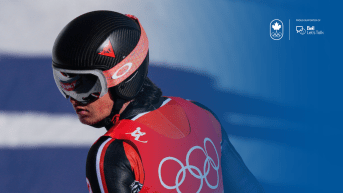Oktoberfest and the Olympics are more similar than you think
You need to be in Olympic form to survive the annual Oktoberfest festival in Munich, Germany!
In fact, it didn’t take too long to notice similarities between the Bavarian festival and the Olympics. Don’t believe it? Keep reading, you’ll see!
The Evolution of the Event
Like the Olympics, Oktoberfest is not the same today as it was in the early days. Established in 1810, Oktoberfest was originally a festive event to celebrate the marriage of the future King Lugwig to Princess Therese of Saxony-Hildburghausen. The event was so popular that they made it an annual thing! Throughout the years the festival evolved to horse racing, and then eventually became a Bavarian cultural festival.
Inspired by the Olympics of Zappas, which were the 1st modern Olympics – yup, here you have it your first Olympic connection – the Oktoberfest organizing committee reworked the event’s concept to become the Bavarian festival, as we know it, in the early years of the XXth century.
The Duration
The festivities are spread out over 16 to 18 days, depending on the year, which is about the same number of days as the Olympics. A coincidence? We think not.
You can find the full schedule of Oktoberfest events here.
The Parade
The Olympics have their Parade of Nations at the Opening Ceremony, and Munich has its Oktoberfest parade called Trachten und Schützenzug – try saying that three times fast, good luck! This parade showcases the traditional costumes of the brewers participating in the festival, and it’s held every year, always on the first Sunday of the festivities and ends where the opening ceremony begins.
The Opening Ceremony
Speaking of Opening Ceremonies, as at the Olympics, the Oktoberfest also has its own event to kick off the festival. Continuing the long-standing tradition, the start of the festival takes place when the mayor of Munich makes the official tapping of the first barrel while shouting O’zapft is!
Barrel is tapped, Cauldron is lit, same thing!
The Event Site
Theresienwiese – or Wiesn for regulars – is where the official site of the Oktoberfest is. It’s kind of the Bavarian version of the Olympic Park.
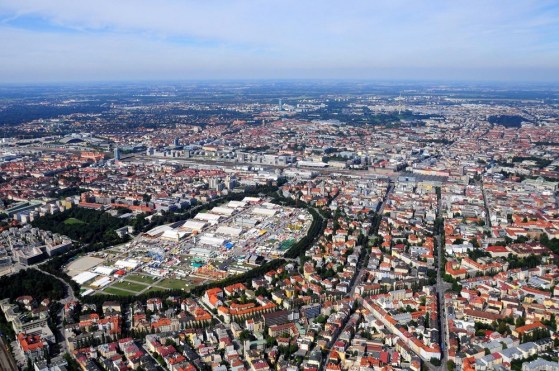
Aerial view of Theresienwiese, where Oktoberfest has been held every year since it originated. (Photo: Oktoberfest.net)
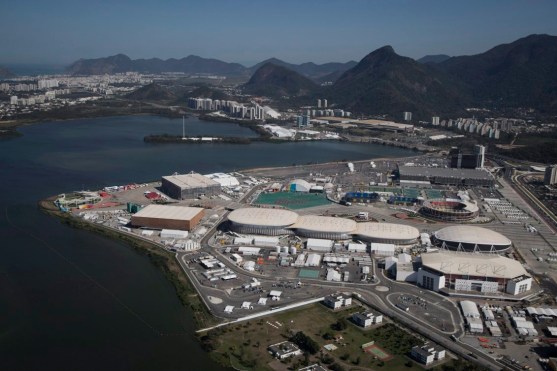
Aerial view of Olympic Park in Rio de Janeiro, Brazil. (AP Photo / Felipe Dana, Fichier)
The Venues
The 14 main tents of the Oktoberfest can each host on average 4,000 to 6,000 visitors at a time (with the largest tent holding up to 11,000 visitors), and a seating area of 4,800 m² which is almost the size of a field hockey pitch (5,027 m2). It’s quite the crowd!
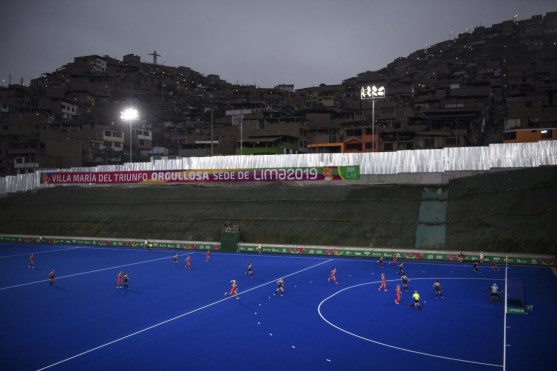
Canadian women’s field hockey team during the semi-finals against USA at the Pan American Games in Lima, 2019. (Photo de Christopher Morris / COC)
Now, let’s check out some statistics of the event and measure them to our Olympic references.
An Olympic Size Audience
While 1.17 million and 1.57 million tourists went to the Rio 2016 and PyeongChang 2018 Olympic Games, more than 6 million people attend Oktoberfest. EVERY. SINGLE. YEAR.
Olympic Pools of Beer
Statistics show that 6,900,000 litres of beer are poured at Oktoberfest each year, which is enough to fill three Olympic pools. Prost!
Olympic Strength
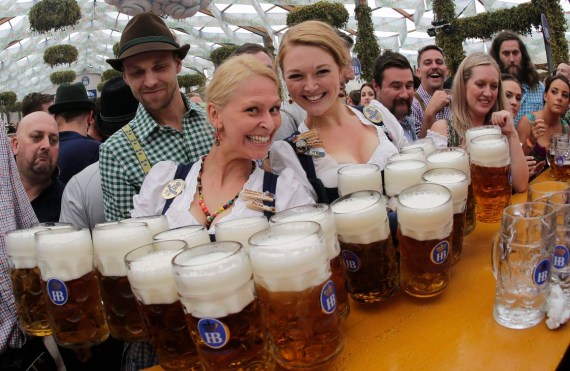
Waitresses Beli, right, and Anika pose with beer mugs during the opening of the 181th Oktoberfest beer festival in Munich, Germany. (AP Photo/Matthias Schrader,file)
Each of the Oktoberfest’s official mugs holds 1 litre of beer and weighs 5 pounds – which means the Bavarian servers are astonishingly strong! The current world record, set in Abensberg, is held by Oliver Strümpfel who carried 29 steins over 40 meters for a total weight of 69 kg.
Oktoberfest will start on September 21st and runs until October 6th.






